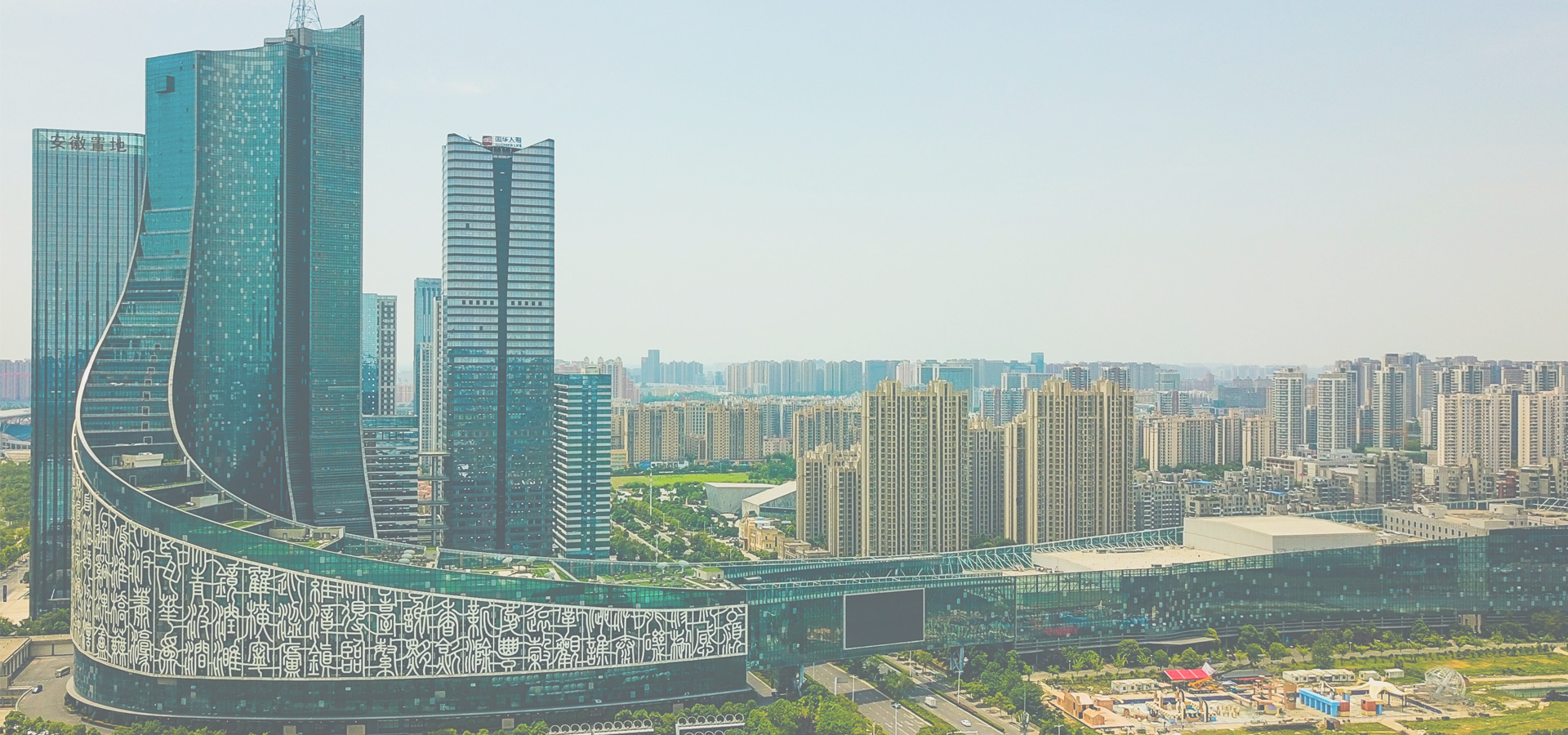Xuancheng, Anhui Province, China
🇨🇳 Xuancheng (宣城) is a city in the south-east of Anhui province. Archeological digs suggest that the city has been settled for over 4,000 years, and has been under formal administration since the Qin dyansty. Located in the lower Yangtze River drainage basin and Yangtze River Delta, it borders Wuhu to the north-west, Chizhou to the west, Huangshan to the south-west, and the provinces of Zhejiang and Jiangsu to the south-east and north-east respectively.
1History Archeological digs in Xuancheng have found pottery and stoneware indicative of the Liangzhu Culture.
During the Spring and Autumn period, the area belonged to the State of Wu, although, upon the decline of Wu, the area was also ruled by the State of Chu and the State of Yue, respectively.
Under the Qin dynasty, the area was administered as Zhang Commandery (鄣郡), which became the Danyang Commandery in 109 BCE, under the Western Han Dynasty. During the Danyang Commandery, Wanling (宛陵, presently Xuanzhou District, the site of the Xuancheng Municipal Government) served as the administrative center. Xuanzhou has been the political, economic and cultural centre of administration since then. In 281 CE, Xuancheng Commandery was established.
Xuancheng became a prefecture-level city in 2000.
1Geography Its terrain is varied and complicated, basically sloping downward from the south to the north. Its landform can be approximately divided into five types: mountain, hill, valley and basin, hillock and plain. The south and south-east regions belong to ranges of Tianmu Mountain, while the south-west and west regions are respectively parts of ranges of Mt. Huangshan and Mt. Jiuhua. Qingliang Peak is also located within Xuancheng. 59.34% of the city's area is forested.
The city has a subtropical humid monsoon climate, with four distinct seasons and abundant precipitation. Of the four seasons, summer is the longest. Its annual average temperature falls round 15.6C (60.1F). Most of the rainfall occurs in summer. The plum rain season lasts from mid-June to early July.
1Administration Xuancheng City administers seven county-level divisions, including one district, two county-level cities and five counties. • Xuanzhou District (宣州区); • Ningguo City (宁国市); • Guangde City (广德市); • Langxi County (郎溪县); • Jing County (泾县); • Jixi County (绩溪县); • Jingde County (旌德县); These are further divided into 115 township-level divisions, including 61 towns, 44 townships and ten subdistricts.
1Language and culture In Xuancheng, Jianghuai Mandarin and Wu Chinese are spoken as well as Standard Mandarin.
Xuancheng is a city with 2,000 years of history and cultural relics. It has a profound cultural heritage and rich tourism resources. There are many scenery resorts, such as the country's largest captive breeding bases—Chinese Crocodile Lake, one of the four unique scenes – Taiji Cave, Peach Blossom Pool, Jing Ting Mountain, Zhangshan Canyon, and cultural sites of the New Fourth Army, the Ancestral Hall of the Hu Family in Jixi, the former residence of Mr. Hu Shih, the Jiang's Village in Jingde, and so on. Since reform and opening up, the city has achieved a lot of progress, and is accelerating the development of municipal services, transport, tourism and other infrastructural facilities. Xuancheng, as a new city with pleasant environments of living, enterprising, sightseeing, is on the rise. The Ningguo Stadium is located in the city. The 12,000-capacity stadium is used mainly for association football matches.
1Demographics Its population was 2,500,063 as of 2020 census whom 774,332 lived in the built-up (or metro) area made of Xuanzhou District.
The city is home to 45 ethnic minorities, whose population totals about 13,000 people. Xuancheng administers one ethnic township: Yunti She Ethnic Township. Xuancheng also administers two ethnic villages: Hucun Hui Ethnic Village (胡村回族村) in Shencun, Xuanzhou District, and Qianqiu She Ethnic Village (千秋畲族村) in Yunti She Ethnic Township, Ningguo.
1Economy As of 2020, the city's gross domestic product is estimated at ¥160.75 billion, its inflation rate was 2.4%, and its urban unemployment rate was 2.7%. Total consumer retail sales in 2020 reached ¥62.66 billion, and foreign trade totaled ¥13.44 billion.
Xuancheng's per capita disposable income is ¥30,746 as of 2020, and stood at ¥42,134 for urban residents, and ¥18,928 for rural residents.
Xuancheng's major industrial products include beverages, cloth, concrete, electronics components, fertilizer, paper and cardboard.
Xuancheng is known for its production of high quality Xuan paper (宣纸; 宣紙), Xuan writing brushes (宣笔; 宣筆), and Xuan ink stones (宣砚; 宣硯), all of which are used in traditional Chinese calligraphy and painting. These products make up a large proportion of the city's exports.
1Education • Hefei University of Technology Xuancheng Campus • Xuancheng High School • Xuancheng Vocational & Technical college.
1Transport: Rail Xuancheng is served by the Anhui–Jiangxi Railway and Beijing–Taipei High-Speed Rail Corridor.
1Asia/Shanghai/Anhui

Xuancheng has a population of over 774,332 people. Xuancheng also forms the centre of the wider Xuancheng Prefecture which has a population of over 2,794,000 people.
To set up a UBI Lab for Xuancheng see: https://www.ubilabnetwork.org Twitter: https://twitter.com/UBILabNetwork
🇪🇬 El Mahalla El Kubra 30.967
🇪🇬 Al Mahallah al Kubra 30.967
🇵🇰 Toba Tek Singh 30.967
🇪🇬 El Mahalla el-Kubra 30.976
🇨🇳 Donghai County 118.766
🇨🇳 Gutian County 118.85
Locations Near: Xuancheng 118.759,30.939
🇨🇳 Xuanzhou 118.757,30.955 d: 1.8
🇨🇳 Maolin 118.42,30.689 d: 42.7
🇨🇳 Jinghu 118.385,31.34 d: 57.1
🇨🇳 Wuhu 118.364,31.344 d: 58.7
Antipodal to: Xuancheng -61.241,-30.939
🇦🇷 Rafaela -61.483,-31.267 d: 19972
🇦🇷 Esperanza -60.933,-31.417 d: 19954.4
🇦🇷 San Cristóbal -61.233,-30.317 d: 19945.9
🇦🇷 San Justo -60.583,-30.783 d: 19950
🇦🇷 Santa Fe de la Vera Cruz -60.7,-31.633 d: 19922.3
🇦🇷 Santa Fe -60.7,-31.633 d: 19922.3
🇦🇷 San Francisco -62.067,-31.433 d: 19919.2
🇦🇷 Sastre -61.833,-31.75 d: 19908.8